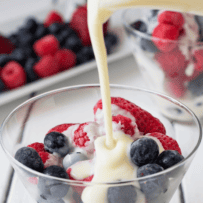Traditional English Custard
Very few classic British desserts are as comforting as warm homemade Traditional English Custard sauce. I’m going to show you how to make it silky smooth and adjust the consistency to your liking—from pourable to thick!
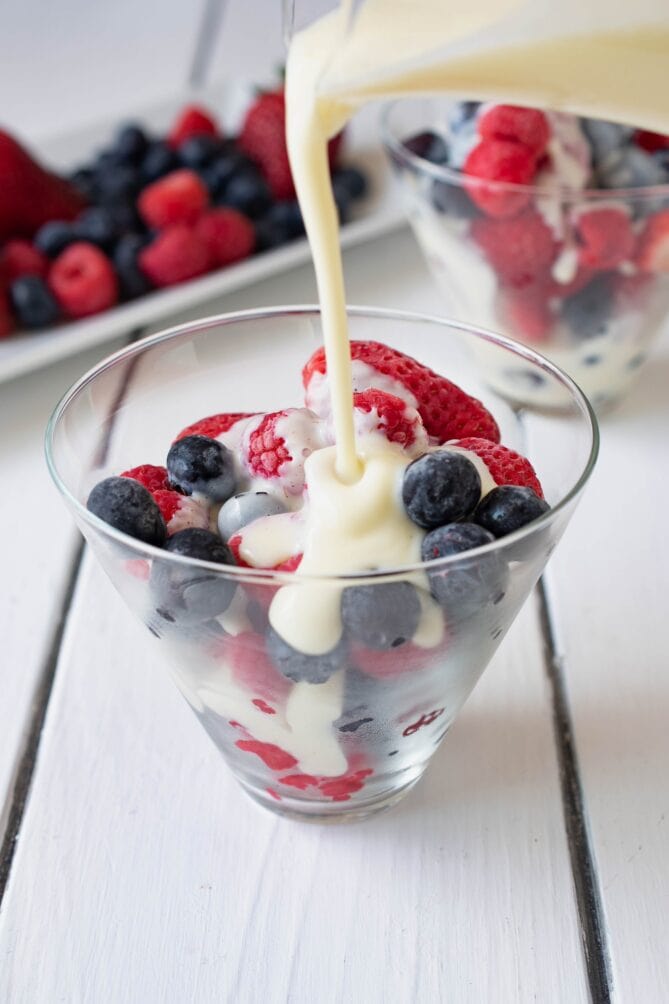
Table of contents
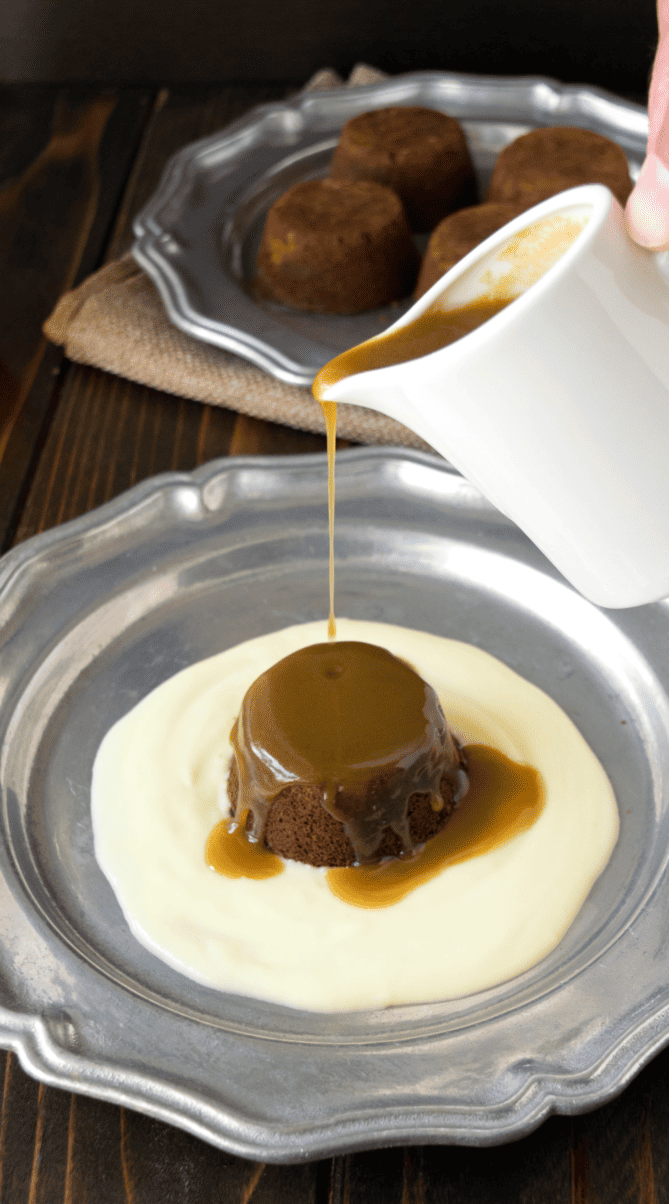
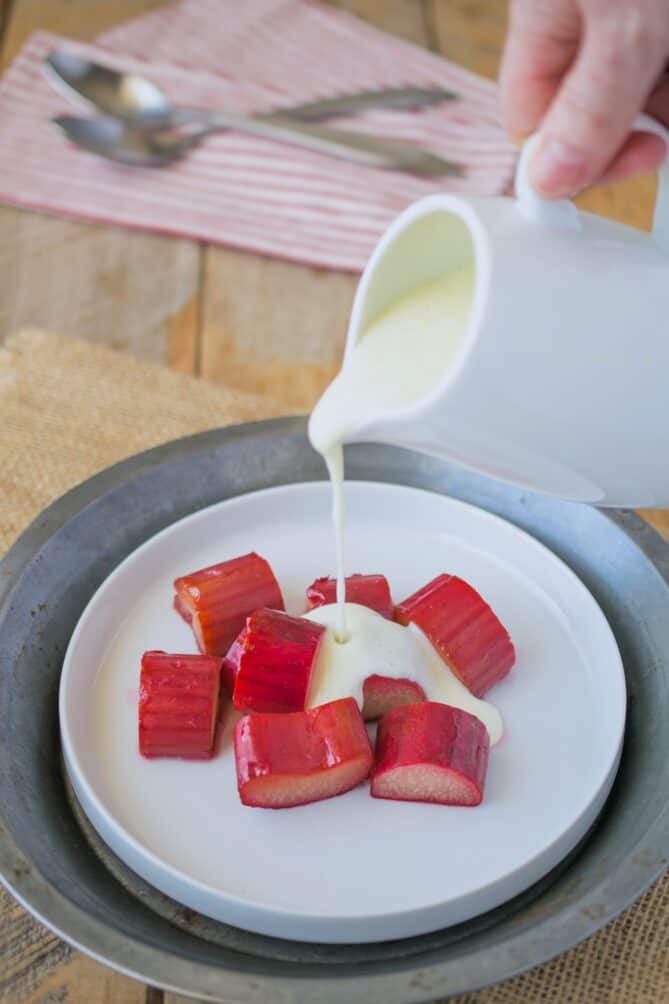
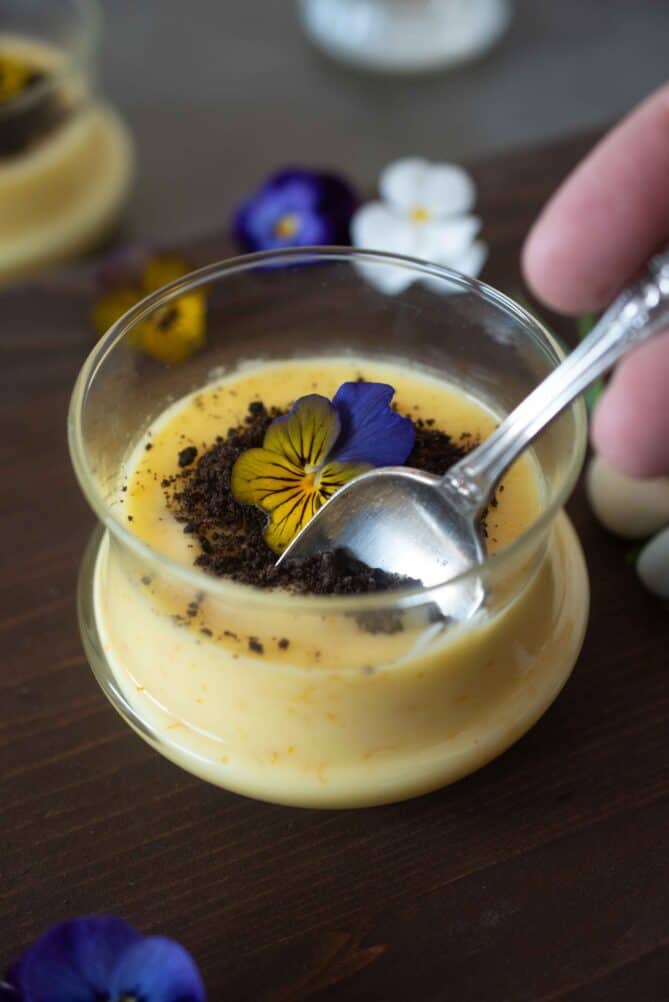
What is Custard?
Vanilla custard is most often served with with Bread Pudding, Fruit Pies, Crumbles, and Steamed Puddings. I also love serving it with my Sticky Toffee Pudding—the creaminess balances the sweetness, with Cooked Rhubarb, pouring it over Frozen Berries (picture a the top of the page), with an Oreo crumb topped Spring Orange Custard (pictures above) or simply on its own.
Custard Types and Consistency
Often called English or British Custard, this classic treat comes in various types. The consistency depends on how you plan to use it. You can make it pourable or thick—all using the same method, just with different textures. Baked custard that is thick and comes in the form of Custard Tarts.
- Baked Custard: Thick and set, commonly used in custard tarts.
- Thicker, More Set Custard: Perfect for trifle (picture below) or tart fillings or eating alone.
- Pouring or Cream Custard: A thinner consistency, similar to French Crème Anglaise, prepared in a saucepan. This is the type I love pouring over frozen berries, as mentioned above.
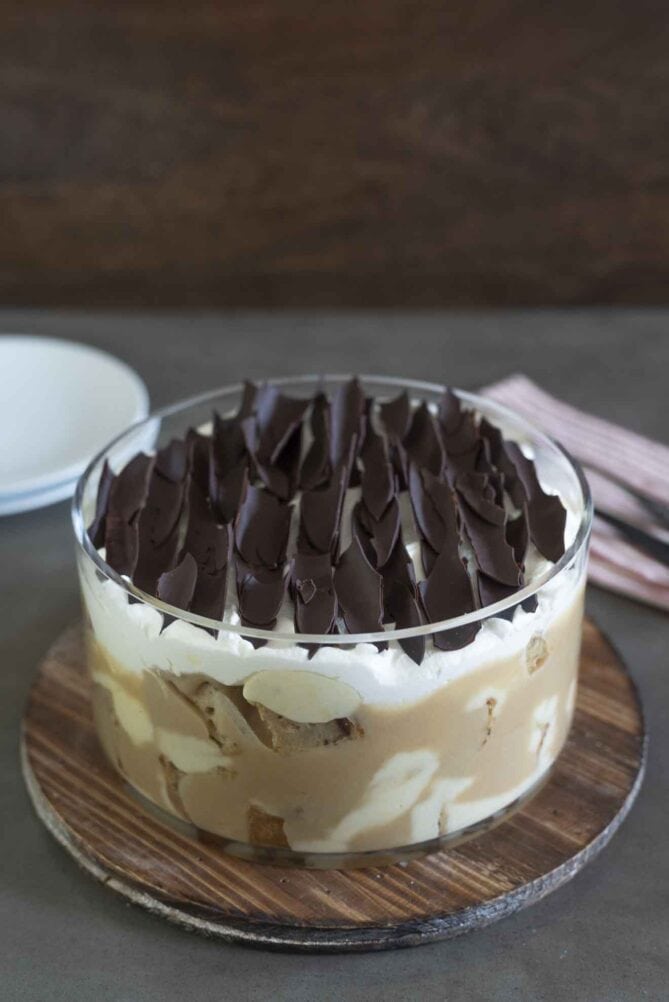
Tips for the Perfect Custard
- Do not boil the milk, you just want to bring it to a light simmer.
- Make sure you whisk the cornstarch/cornflour fully into the egg mixture until smooth. If there is lumps, the custard will have lumps.
- Important to constantly whisk to prevent lumps.
- Cook over low to medium heat to gently thicken the custard. Higher heat will produce lumps.
- Tempering the eggs (adding a little hot milk) is one of the most important steps so they don’t cook too fast.
Why Custard Curdles
Custard curdles when the eggs cook too quickly and form lumps. Here’s what causes it:
- Too Much Heat – High temperatures can scramble the eggs. Always cook custard low and slow, whisking constantly.
- Not Whisking Enough – Without constant whisking, the mixture heats unevenly, leading to curdling. It can also stick to the bottom of the pan.
- Adding Hot Liquid Too Fast – Pouring hot milk into eggs too quickly can shock them into scrambling. Temper the eggs by adding the hot liquid gradually while whisking non-stop.
- Overcooking – Once custard thickens, remove it from heat immediately! It will continue to thicken as it cools.
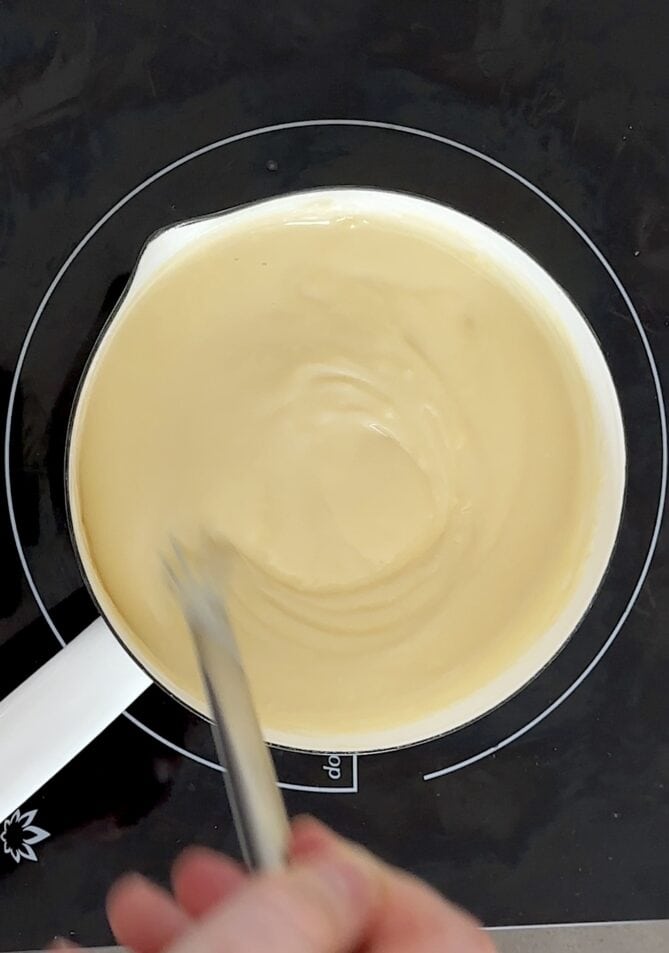
Cornstarch/Cornflour in Custard
Cornstarch (cornflour) not only thickens the custard but also stabilizes it and prevents curdling. If lumps form and whisking doesn’t smooth them out, simply pass the custard through a sieve.
Adjusting the Thickness of Traditional English Custard
You can easily control the thickness of custard by adjusting the ratio of cornstarch, eggs, and liquid. This recipe makes a fairly thick custard, but you can modify it to fit your preference.
- For a thinner custard you can pour: Use less cornstarch and more milk or cream.
- For a thicker, spoonable custard: Increase the cornstarch or egg yolks.
- For an extra-thick custard (ideal for tarts or trifles): Use more egg yolks and let it cook a bit longer.
If your custard turns out too thick, whisk in a little warm milk to loosen it. If it’s too thin, return it to low heat and stir until it thickens.
Storing Leftover Custard
- Refrigerate: Let the custard cool to room temperature, then transfer it to an airtight container. Store it in the fridge for up to 3 days.
- Reheat Gently: Warm it slowly over low heat on the stove, stirring constantly to prevent curdling. You can also microwave it in short bursts, stirring between each one.
- Freezing? Custard doesn’t freeze well—it can separate and turn grainy. But if you must, freeze it in an airtight container and whisk it back to life after thawing!
- Pro Tip: Press plastic wrap directly onto the surface before refrigerating to prevent a skin from forming.
If you’ve made my Traditional English Custard, please leave a rating in the recipe card. You can also ask a question, or leave a comment below.
Traditional English Custard
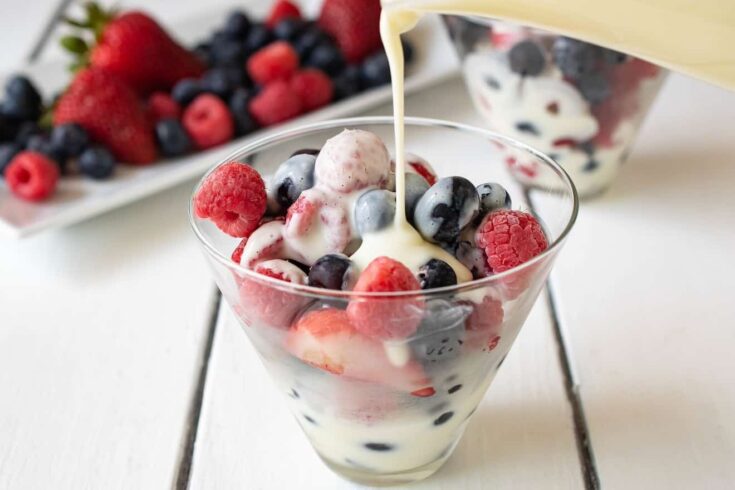
An easy and traditional way to make vanilla custard.
Ingredients
- 2 ¼ cups (532 ml) whole milk
- ½ cup (100 grams) granulated sugar
- 2 large egg yolks, room temperature
- 1 large egg, room temperature
- 4 tablespoons cornstarch/cornflour
- 1 ½ teaspoons vanilla extract
Instructions
- To a medium saucepan, add the milk and sugar over medium heat, bring to a simmer (do not boil).
- Meanwhile, add the eggs to a large mixing bowl. Whisk in the cornstarch until smooth. Whisk well until there are no lumps. Slowly drizzle while whisking ⅓ of the hot milk into the egg mixture. This will temper the eggs and stop them from curdling or cooking.
- Turn the heat off. Slowly add the egg mix to the milk while constantly whisking until thickened, scraping the bottom so it doesn’t stick and get lumpy. Once the custard has thickened, remove from the heat. If it is too thick, whisk in more milk until it reaches the consistency you like.
- This recipe yields approximately 3 cups/1 ½ pints.
Notes
Nutrition Information
Yield
4Serving Size
1Amount Per Serving Calories 283Total Fat 9gSaturated Fat 4gTrans Fat 0gUnsaturated Fat 4gCholesterol 199mgSodium 115mgCarbohydrates 40gFiber 0gSugar 32gProtein 10g
This nutrition calculation is provided by Nutronix that is only a guideline and not intended for any particular diet.
